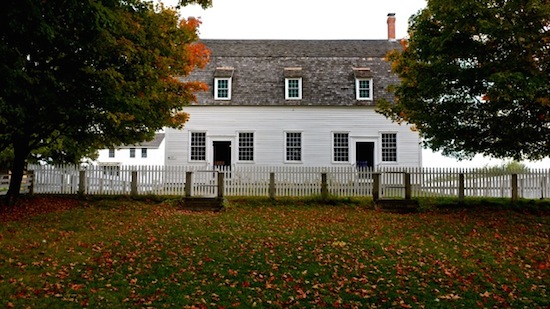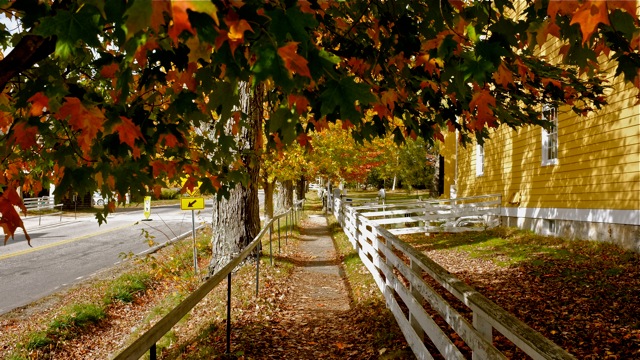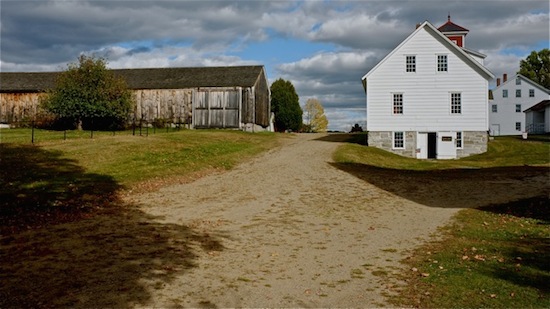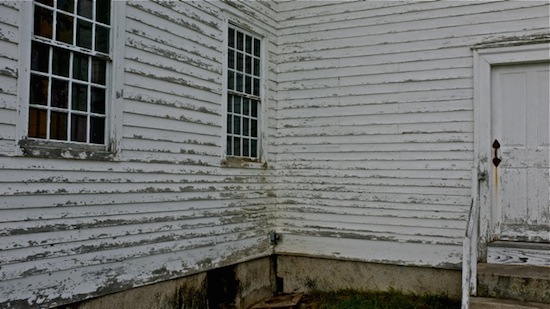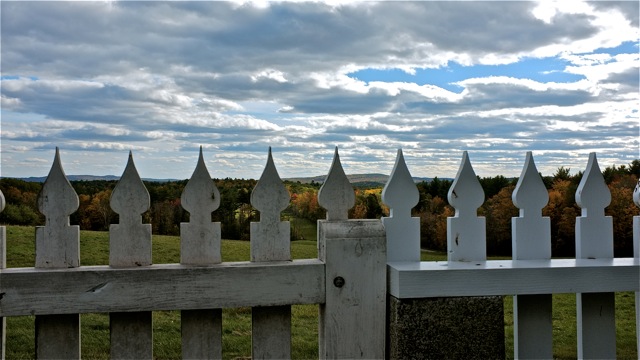New Hampshire's lovely, strange, sad Canterbury tale
Commentary and photos by WILLIAM MORGAN
One of the treats of living in New England is spending a glorious October afternoon in New Hampshire. And of all the delightful, picture post-card perfect towns, one of the least unspoiled is the Shaker Village at Canterbury. (More photos below.)
There has been enough written about the Shakers. Yet a place like Canterbury can be very seductive: a utopian community where celibate people trying to be holy lived the simple life, farming and crafting timeless furniture.
Still, there is always a sense of unreality at most historic villages, such as Williamsburg or Plimoth Plantation. Canterbury has been saved from the worst excesses of that syndrome by not having a lot of money – the place is clearly struggling, buildings need paint and repair, while ghost tours, antique -car shows and the gift shop can only bring in so much revenue.
And, as with any Shaker community, no matter how well interpreted, there is still a dark side, a sadness. Besides the people fleeing the industrial life in the 19th Century, not to mention the creepiness of sect founder, Mother Ann Lee, one cannot escape the poor business model of an enterprise that relied solely on converts for growth.
In 1850, the Canterbury Shaker Village had 5,000 acres; today there are less than 700. But that land protects the community from whatever kind of trailer-park development would seek out a back-of-beyond rural area with no industry or promise of work. So, while ostensibly preserving the legacy of Shakers, Canterbury has maintained a real slice of what much of New Hampshire was like before World War II.
